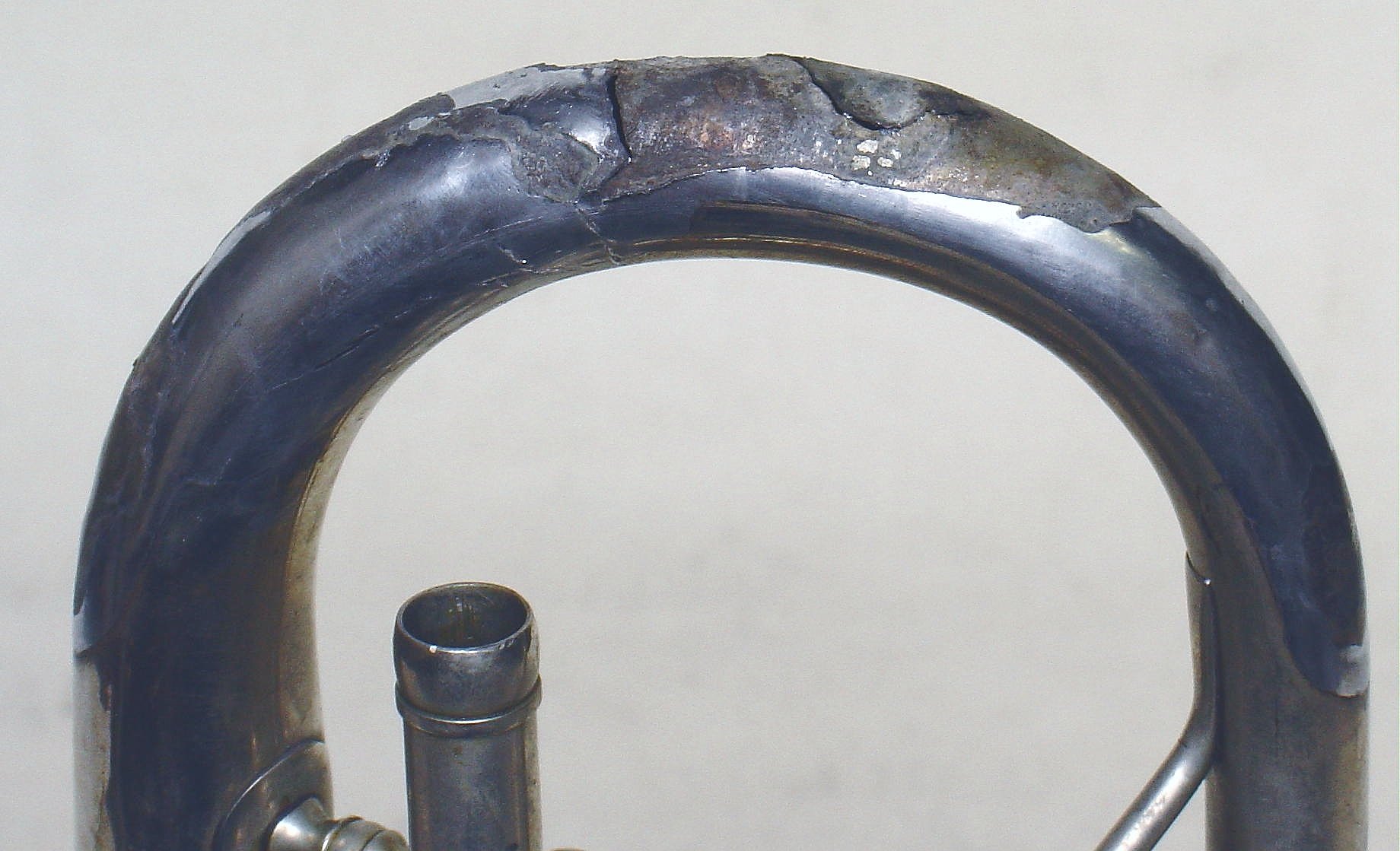Fiske Eb Soprano
This Eb valve bugle (soprano flugelhorn or Saxhorn) was likely made by Isaac Fiske about1860. This is an early example of side action valve levers on a US made instrument, years before it was a popular style. The details that indicate an early date are the design of the third valve slide crook and the diagonal braces from the valve slides to bell and branch. The second photo is another very similar soprano from a year or two later with different braces while still having the earlier style third slide crook. The third image is of a soprano with similar proportions that was illustrated in the 1868 catalog, showing the same curved brace assembly seen in the second example, but with several changes, including the 1866 patented valves, different slide crooks and no bell garland.
The owner, Mark Elrod, was hoping that the reinforcing patch that wraps around the curve of the bell was original, since it was obviously well done. Removing the patch, however, revealed that the nickel silver has deteriorated considerably and the patch was obviously applied more than 100 years ago when this instrument was originally in use. It was obviously considered a good enough instrument to justify repairing it to keep it in playing condition, but the cracks in the metal have advanced with age and further abuse. In order to restore it to playability once again, several smaller patches had to be installed.
There are always judgments to be made when restoring or preserving antiques. An instrument with moderate historical importance such as this should be handled judiciously, careful not to destroy original material or use methods that are not reversible. It would have been possible to silver solder some of the cracks that extended beyond the original patches, but with such delicate metal, it is possible to cause additional damage and once applied, the silver solder is not removable, without destructive measures. The additional patches seemed to be the obvious choice in this case.
In extreme cases, the metal is so badly deteriorated and cracking throughout, that it would not be possible to restore to good playing or cosmetic condition and we must be satisfied just to preserve what is left of the original instrument. Fortunately, that is the very rare case and most brass instruments can be restored to some degree and we can enjoy the for their visual and acoustical beauty.
This valve bugle was missing the tuning shank, and I was able to make a reproduction of existing originals. It's quite a good playing instrument, as are all those made by Fiske and exhibits mechanical beauty unique to instruments from this workshop.







